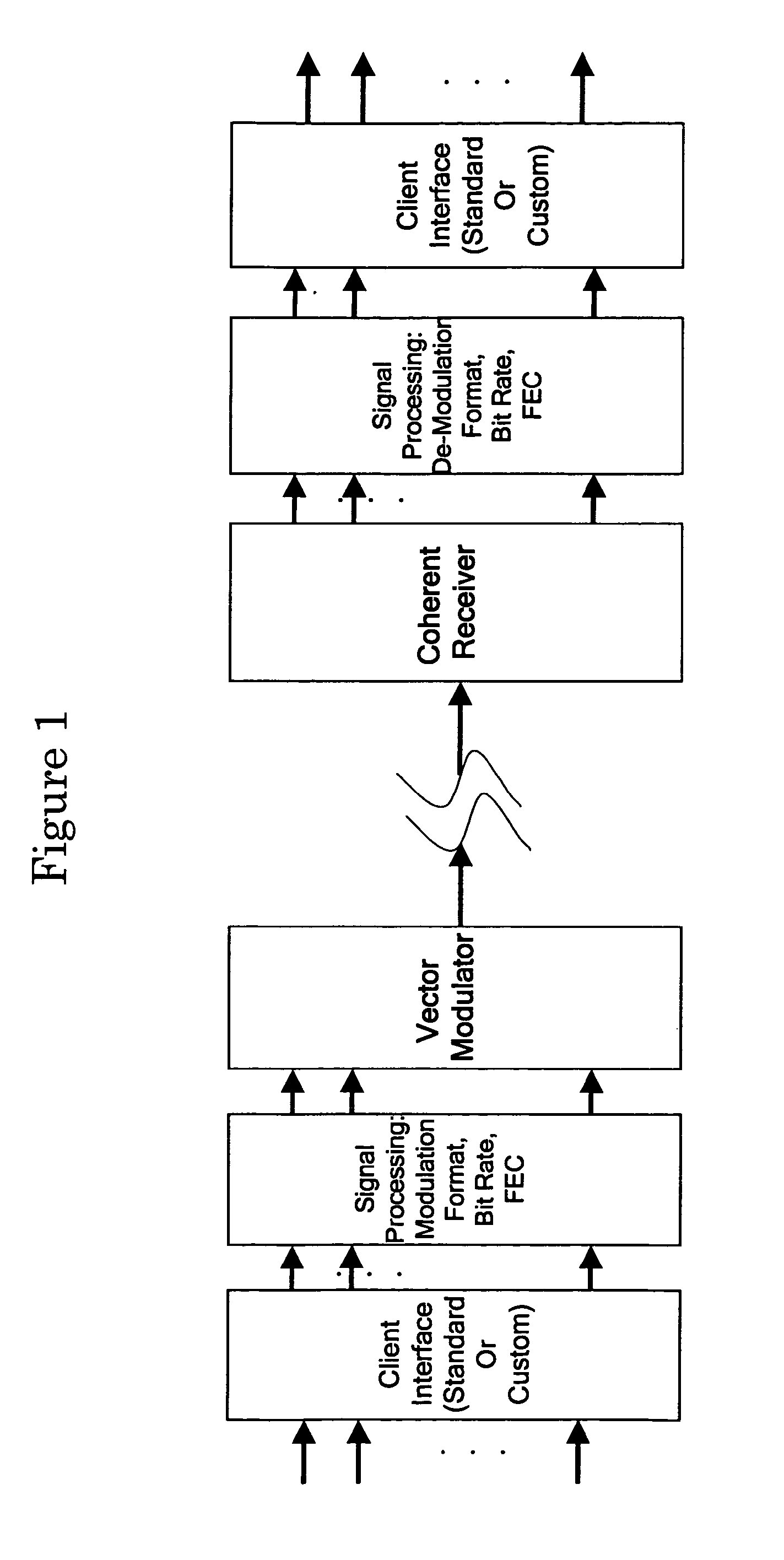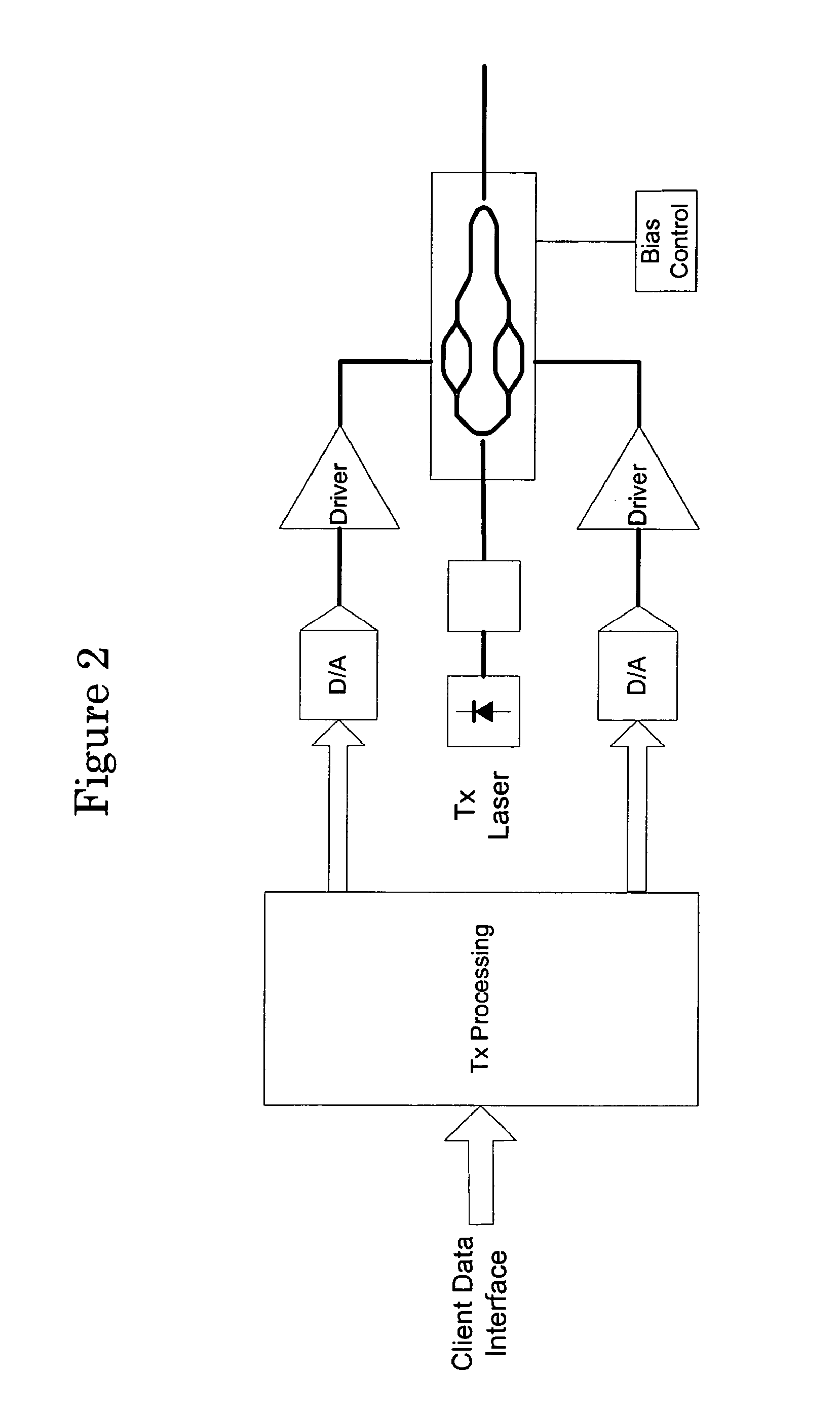Optical transmission apparatuses, methods, and systems
a technology of optical transmission and transmission apparatus, applied in the direction of electromagnetic transmission, electrical equipment, transmission, etc., can solve the problems of limited operation bandwidth of edfas, limited benefit of first option, transmission and detection errors in optical systems, etc., and achieve the effect of robust optical communication
- Summary
- Abstract
- Description
- Claims
- Application Information
AI Technical Summary
Benefits of technology
Problems solved by technology
Method used
Image
Examples
Embodiment Construction
[0057]FIG. 1 illustrates an ideal ACOM with an “agile optical transmitter” [AOT] and a “agile coherent optical receiver” [ACOR]. The AOT (FIG. 2) is comprised of a client interface, a signal-processing unit [SPU], and an optical transport unit generally including a vector modulator or other device that converts any RF waveform into an optical signal at any wavelength. See U.S. Pat. No. 6,118,566, which is incorporated herein by reference, for an example of optical upconversion of RF waveforms. The signal-processing unit is a flexible digital signal-processing [DSP] unit that can generate any RF waveform in any shape and at any data rate. The signal-processing unit also has the capability of scrambling data or pre-distorting the signals for security purposes, forward error correction [FEC] for improved link communication, adaptive modulation for optimizing the data rate and modulation format, and polarization control of the signals in an appropriately designed vector modulator. The c...
PUM
 Login to View More
Login to View More Abstract
Description
Claims
Application Information
 Login to View More
Login to View More - R&D
- Intellectual Property
- Life Sciences
- Materials
- Tech Scout
- Unparalleled Data Quality
- Higher Quality Content
- 60% Fewer Hallucinations
Browse by: Latest US Patents, China's latest patents, Technical Efficacy Thesaurus, Application Domain, Technology Topic, Popular Technical Reports.
© 2025 PatSnap. All rights reserved.Legal|Privacy policy|Modern Slavery Act Transparency Statement|Sitemap|About US| Contact US: help@patsnap.com



